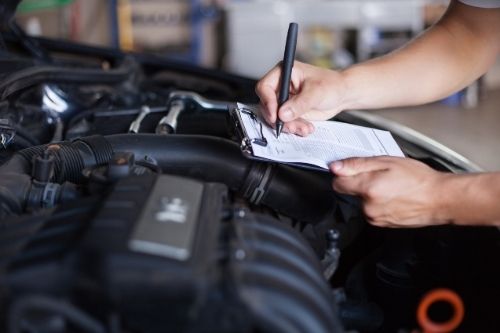
When it comes to purchasing a vehicle, safety should always be a top priority. A car is more than just a mode of transportation; it’s a means of protecting yourself and your loved ones on the road. Ensuring that you buy a safe car involves thorough research, evaluation of safety features, consideration of maintenance and reliability, and budgeting for safety. This comprehensive guide will walk you through the essential steps to buying a safe car to get SAB Safety Certificates.
I. Introduction to Car Safety
A. Importance of Safety in Car Purchases
Safety should be a paramount consideration when buying a car, as it directly impacts the well-being of drivers, passengers, and other road users.
B. Factors Contributing to Car Safety
Various factors contribute to a car’s safety, including its design, construction, safety features, and overall performance.
C. Overview of the Article
This article provides a comprehensive guide to buying a safe car, covering everything from researching safety ratings to budgeting for safety features.
II. Researching Safety Ratings and Reviews
A. Understanding Safety Ratings
Safety ratings provide valuable insights into a vehicle’s crashworthiness and safety features, helping buyers make informed decisions.
- Crash Test Ratings: Evaluate how well a vehicle performs in crash simulations conducted by organizations like the National Highway Traffic Safety Administration (NHTSA) and the Insurance Institute for Highway Safety (IIHS).
- Safety Features Ratings: Assess the effectiveness of a vehicle’s safety features, such as airbags, seat belts, and advanced driver assistance systems (ADAS).
- Overall Safety Scores: Combine various safety factors to provide an overall assessment of a vehicle’s safety performance.
B. Reviewing Expert Opinions
Expert opinions from automotive journalists, consumer reports, and safety organizations offer additional perspectives on a vehicle’s safety.
- Automotive Journalists: Experienced automotive journalists conduct thorough reviews and safety assessments of vehicles, providing valuable insights for prospective buyers.
- Consumer Reports: Consumer Reports conducts independent testing and evaluations of vehicles, including safety features, reliability, and owner satisfaction.
- Safety Organizations: Organizations like the IIHS and NHTSA conduct extensive safety testing and provide safety ratings and recommendations for vehicles.
III. Evaluating Safety Features
A. Active Safety Features
Active safety features are designed to prevent accidents and collisions by alerting drivers to potential hazards and assisting in vehicle control.
- Collision Avoidance Systems: Automatically apply brakes or adjust speed to prevent collisions with other vehicles or obstacles.
- Lane Departure Warning: Alert drivers when the vehicle drifts out of its lane without signaling, helping prevent lane departure accidents.
- Adaptive Cruise Control: Maintain a safe following distance from other vehicles by automatically adjusting the vehicle’s speed.
B. Passive Safety Features
Passive safety features are designed to protect occupants in the event of a collision or accident by minimizing the impact forces and injuries.
- Airbags: Deploy rapidly upon impact to cushion occupants and reduce the risk of injury from collision forces.
- Seatbelts: Secure occupants in their seats during a collision, preventing them from being ejected from the vehicle and reducing the risk of injury.
- Structural Integrity: The vehicle’s structural design and construction play a crucial role in protecting occupants by maintaining the cabin’s integrity during a crash.
C. Advanced Safety Technologies
Advanced safety technologies, such as autonomous emergency braking, blind spot monitoring, and rearview cameras, further enhance a vehicle’s safety performance.
- Autonomous Emergency Braking: Automatically apply brakes in emergency situations to prevent or mitigate collisions.
- Blind Spot Monitoring: Alert drivers to vehicles in their blind spots, reducing the risk of side-impact collisions during lane changes.
- Rearview Cameras: Provide a clear view of the area behind the vehicle, assisting drivers in maneuvering and parking safely.
IV. Considering Maintenance and Reliability
A. Maintenance Records and Vehicle History
Reviewing a vehicle’s maintenance records, service history, accident history, and recall information can provide insights into its overall condition and reliability.
- Service Records: Document the vehicle’s maintenance history, including regular service intervals, repairs, and replacements.
- Accident History: Determine whether the vehicle has been involved in any accidents or collisions and the extent of damage sustained.
- Recall Information: Check for any outstanding recalls or manufacturer defects that may affect the vehicle’s safety and performance.
B. Reliability Ratings and Longevity
Consider reliability ratings, dependability studies, and long-term ownership reports to assess the vehicle’s reliability and longevity.
- Dependability Studies: Evaluate the vehicle’s reliability and long-term performance based on owner surveys and industry reports.
- Long-Term Ownership Reports: Gather insights from current owners about their experiences with the vehicle, including reliability, maintenance costs, and overall satisfaction.
- Predicted Reliability Ratings: Assess the vehicle’s predicted reliability and potential long-term maintenance costs based on historical data and industry projections.
V. Budgeting for Safety
A. Cost of Safety Features
Consider the cost of safety features when budgeting for a vehicle, including standard vs. optional features, aftermarket safety upgrades, and the potential long-term savings and benefits.
- Standard vs. Optional Features: Determine which safety features come standard with the vehicle and which are available as optional upgrades.
- Aftermarket Safety Upgrades: Explore aftermarket safety upgrades and accessories that can enhance the vehicle’s safety performance, such as advanced driver assistance systems (ADAS) and collision avoidance systems.
- Cost-Benefit Analysis: Evaluate the cost-effectiveness of safety features based on their potential to prevent accidents, reduce injuries, and save lives.
B. Long-Term Savings and Benefits
Consider the long-term savings and benefits associated with safety features, including potential insurance discounts, reduced maintenance costs, and enhanced resale value.
- Potential Insurance Discounts: Some insurance companies offer discounts for vehicles equipped with certain safety features that reduce the risk of accidents and injuries.
- Reduced Maintenance Costs: Vehicles equipped with advanced safety features may require less maintenance and repairs over time, resulting in lower long-term ownership costs.
- Enhanced Resale Value: Safety features can enhance a vehicle’s resale value by making it more attractive to potential buyers and demonstrating its commitment to safety and quality.
In conclusion, buying a safe car involves thorough research, evaluation of safety features, consideration of maintenance and reliability, and budgeting for safety. By following this comprehensive guide, you can make an informed decision and ensure that you purchase a vehicle that prioritizes your safety and well-being on the road. Remember, investing in a safe car is an investment in your peace of mind and the safety of yourself and your loved ones.


